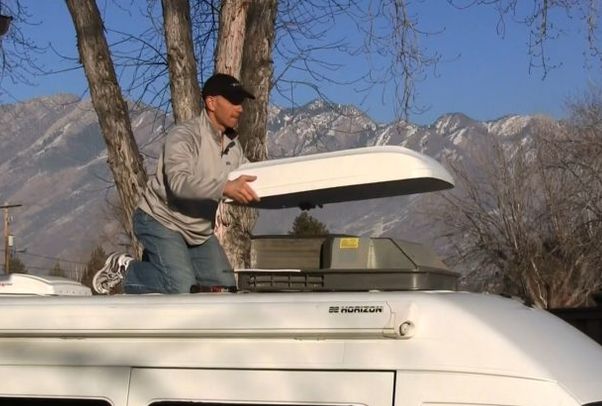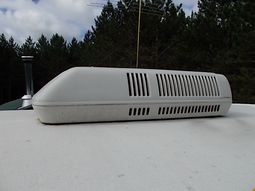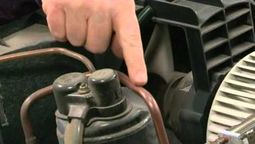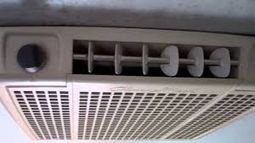
How to Recharge an RV Air Conditioner: Helpful Guide + Tips
RVs are a good vacation option. They help you bring a little of your home with you when you leave your home. They have extra room, home necessities and of course, a little air conditioning. Air conditioning while on the road is almost a must. You need to learn how to care for it to get all the full benefits from an RV air conditioner
How to Recharge an RV Air Conditioner: RV air conditioners run on the same principle as many home air conditioning units. To recharge an RV air conditioning unit, you just need to replace the coolant.
Having an air conditioner in your RV helps make your vacation more enjoyable. To keep it working at top levels so your vacation is not ruined, just continue to read our article. It is filled with tips and helpful hints to keep your RV unit in top working order.
Tip #1; before you add a second air conditioner, make sure you have the space and the right materials to vent it properly. Also, make sure you upgrade your fuses so you do not lose power at the wrong time
Tip #2: Direct sunlight will heat up the air temperature inside the AC unit and your RV. Make sure to park in the shade so you get accurate temperature readings
Can I Recharge my RV Air Conditioner
It is possible to recharge your RV air conditioner. The thing you have to watch out for is the coolant levels. If the unit is not completely empty, then you may only have to add a little coolant to get the air conditioner at peak levels.
Here are 5 steps to take to recharge your RV air conditioning unit:
- First, lower the power being sent to your RV’s air conditioner
- Second, check your RV’s owner manual to find out the specific brand of coolant you need top use. You can’t mix and match
- Third, remove the plastic lid guarding the air conditioner. Lift straight up so you do not damage the coils
- Fourth, get a coolant gauge to measure the level of the coolant inside. Once you know the levels unscrew the port using a wrench. Then add the coolant and tighten the port back down
- Fifth, take your time and slowly add the coolant. Monitor the temperature levels of the air in the AC and the air in your RV. When you have reached full, the temperature difference between the air in your RV and AC should be about 20 degrees F
- Finally, put the plastic case back on and restore the power to the AC unit. Continue to monitor the air temperature to make sure you did it all correctly. Once that has been done, tighten the plastic lid down securely
Tip #3: If you only need to add a little coolant, that is called topping up. If you need to fill an empty chamber, that is called recharging
Does RV Air Conditioner Need Freon

Not necessarily. Different Air conditioning units use different types of coolant to lower the air temperature. You would have to check your owner’s manual to see the exact coolant specifications your RV air conditioner uses before buying freon.
But in most cases, RV air conditioners are designed to be a one use system. That means that for the most part, they do not come with the ports and other attachments needed to recharge them with coolant.
To recharge your RV in most cases, you would need to have valves installed. Usually the RV air conditioner is hermetically sealed. That means you have to break the seal in order to recharge it., That can be costly and if the technician doesn’t know what they are doing, you may have to replace the unit
Put Freon in RV Rooftop Air Conditioner
When you are putting freon in your RV’s AC you need to be careful. It is not a job for those who do not have patience and are not careful when they work. You have to be careful because there are a lot of fragile parts inside.
The ports you need to use are usually located on the side with the largest copper tubing. Attach the manifold gauge to the suction side of the unit, this is the large copper tubing.
Turn the air conditioner on by putting it on the lowest setting possible. Read the gauge to make sure you need to top up or recharge. Once you see that it does, attach the coolant container to the suction tubing and open it up.
It should only take about 1 minute to fill your RV’s coolant chamber. For best results, you may want a professional mechanic to handle the process.
Tip #4: if you are not mechanically inclined then it is not recommended that you handle this issue yourself. Take it to a professional mechanic who has the experience and knowledge to do a good job.
RV Air Conditioner Recharge Kit
It is possible to get a RV recharge kit. That is if you want to do it yourself and save a little money. Inside these kits you should have a valve, a hose and several cans of coolant. The hose is easy to use and should attach to the AC port with a click of the handle.
On the hose is the AC pressure gauge. This gauge will let you know if your AC unit is full, needs topping up or needs to be recharged. Once you learn the AC coolant level then you know how much coolant you should put in the chamber.
Make sure you hook the hose and gauge to the correct valve or you will not get an accurate reading. If you do not find any ports on your RV AC unit, then that means it was not designed to be recharged.
When you are in this situation, you will have to think about replacing the unit with a new one.
Tip #5: before you rush out and buy your AC recharge kit, make sure you know your RV’s make, model, engine and location. Different RVs have different levels of charges needed to fill up the unit.
RV Air Conditioner Freon Type
Most RVs come with sealed Ac units. That means that the coolant inside is designed to last the lifetime of the AC unit. This is not always going to be the case because things happen and leaks develop,
When you are going to add or replace the freon inside your RV AC unit, you will want to use freon R-22. The good news is that this freon is common. The bad news is that there are strict regulations governing its handling.
You need one of 3 licenses to buy and handle R-22 coolant. In brief, here are those licenses:
- Certified Refrigerant Technicians approved by the E.P.A.
- A buyer of refrigerant for resale to a Certified Refrigerant Technician
- Automotive Certified Refrigerant Technicians approved by the E.P.A.
- There are some exceptions but those exceptions do not authorize you to purchase R-22. It is best to check the regulations in your area but the safe way to go is to hire a professional to handle the recharging task.
- Other types of freon used in RVs are R-134a, R-410A.
RV Air Conditioner Freon Capacity
The amount of freon or any coolant you put in your RV’s AC depends a lot on the make,model and engine type or its location. There is not a one size fits all capacity that simplifies this process.
Each RV has its own capacity with some using the same amount. Also, they may not use the exact same type of coolant. The range of charge needed to recharge your empty AC unit is quite wide.
Some units take as little a 1 1/4 pounds while others will need up to 8 pounds. There are quite a few in the 4 and 5 pound capacity range. If you want a look at a more specific chart to see where your RV lies, click here
You do not want to come to your recharge duty unprepared and not knowing how much freon to put inside the unit.
Dometic RV Air Conditioner Recharge

When trying to do a dometic recharge, you need t be aware of the cost involved. It is quite high and may be the same price as buying a new Air conditioning unit. But with that said you can buy bullet piercing valves to help do the job.
The thing about using bullet piercing taps is that they might spring a leak or tow after you have installed them. You need to be very careful when you tap the air conditioning line to install those valves.
Then if you do not have a license top buy the freon you won’t be able to recharge it. Yet, if you can get R-410A, then it must be recharged in liquid form. The attempts to recharge this type of RV air conditioning unit are not brand specific.
There are no other tricks to use if you have a different brand than a family friend has in their RV. Each one needs an access valve installed to recharge it properly. When it comes to recharging this type of RV air conditioner or any other model, you want to check the other parts first.
It may be a simple issue that stops the air conditioner from doing its cooling job properly.
Duo Therm RV Air Conditioner Recharge
This model is like any other RV air conditioner model. If you do not have a license to buy the freon then it is going to be difficult to recharge it yourself. To get an A/C tech to do the job, you may be looking at some very high labor costs
Those costs make the price to replace the unit a lot more attractive. If you still want to recharge your Duo Therm Av unit, then you need to know it is a sealed system and you need to install access valves,
Coleman RV Air Conditioner Recharge

As has been stated already, most RV air conditioners are designed to not be recharged. They are sealed systems and the freon inside is made to last the life time of the unit. That is if it doesn’t spring a leak.
Coleman is also a sealed system and the only way to recharge them is to buy access valves and a RV air conditioner recharge kit. Then you will need the right license to purchase the freon.
Going to a professional RC AC technician may cost you more than you want to spend. RV air conditioners are not like other air conditioners. Why it is this way is anyone’s guess.
Other Reasons why an RV AC Blow Warm Air
Most people who own an RV come to the conclusion that it must be the freon that is the problem when their air conditioner starts blowing warm or hot air. While it may be people’s first thought, it may not be the first reason for that situation.
When your air conditioner stops blowing cold air, there are other parts that may have broken or worn out. Some of these reasons could be the air filter is dirty and clogged. The amp fuse is not the right size, the capacitor has broken, the condenser fins are not straight and on it goes.
A lot of these issues are easy and inexpensive to fix. They should be checked first before assuming you are low or out of freon.
Some Final Comments
Addressing air conditioner issues in your RV is not going to be the same as doing it for your car or your home air conditioner. These units are built differently and normal home or car fixes may not apply.
With the closed system employed by RV manufacturers, it may be easier and cheaper to replace the AC unit than it is to try to top up or recharge the old one. With government regulations concerning freon so strict, you may have to hire a professional to make sure you get the right coolant inside.
Save yourself a lot of time and frustration and let the professionals handle your RV air conditioner repairs.

